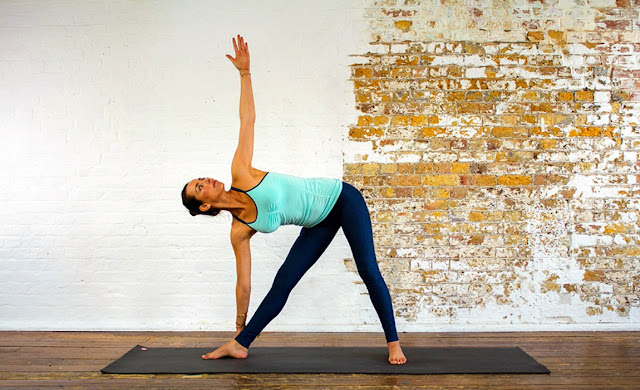
With advances in modern medicine, people are living longer and healthier lives than ever before. Yet, aging still remains a physically challenging process, where the body breaks down in various places and ways. This is why Yoga is a health maintenance system for dealing with the pain, loss of flexibility, and decreased mobility, which come with aging.
Even healthy seniors find that their bodies’ ache more and more as time goes by, and we can more quickly lose muscle mass, flexibility, and range of motion as a result of an injury or illness. Thus, the increased muscle strength and flexibility that people derive from Yoga, makes a steady practice the perfect way to manage pain and maintain physical mobility.
For healthy and fit seniors, who do not have any limiting medical or physical issues, maintenance is a priority. Fit seniors still face the typical joint problems and must work at maintaining or increasing muscle mass. Yoga can be a safe way to maintain a high level of fitness and take care of one’s skeletal health. Hatha Yoga is a low-risk method to strengthen muscles, increase flexibility, and improve breathing capacity, which addresses the needs of all adults.
Self-Assessment
The floor is a good place to start. If you can get down to the floor and get up easily, you have more mobility than some of your peers. Many seniors have no difficulty getting to the floor, but some of us may be at risk of a fall, when going from the floor to a standing position. If getting up and down, to and from the floor, is unsafe, standing positions and using a chair for seated positions are a wise precaution.
Short List of Yoga Poses
Below is a brief list of Yoga Poses (asanas) for active seniors, but a chair may come in handy when practicing seated postures. Keep your head even with your heart, or above it, if you have: high blood pressure, heart problems, previous stroke, eye problems, aneurysm, epilepsy, or if you are taking blood thinners of any kind – including aspirin. Always speak with your physician before starting any new form of exercise.
Standing Asanas
Warrior III Pose
Bound Angle Pose
All Fours (Table) Asanas
Downward Dog
Yoga Tips For All Seniors
Due to the fact that our muscles naturally lose flexibility, strength, and range of motion as we age, all of us should take care to move slowly and gently through Yoga poses. Position changes, either within a pose or in a pose switch, can tear muscles or overextend joints if they are done too suddenly.
We should be especially cautious about forward and back bends that may place unneeded stress on the spine. Pushing into a back bend, when one has osteoporosis or other bone diseases, can cause a compression fracture. For this reason: Go easy, gradually, and patiently with your Yoga practice.
Even fit seniors should avoid holding balance poses, for longer periods of time, if they experience circulation problems in the legs. Instead, to derive the same benefits from the posture, Yoga practitioners should do shorter holds and more repetitions.
Chairs or other support items like blocks or bolsters should be used if needed. Due to the fact that Hatha Yoga is such an adaptable form of exercise, seniors should not hesitate to make modifications to poses, which prevents the irritation of pre-existing injuries.
A fit and mobile senior should have no problem avoiding injury in a basic Yoga session, but it can be very tempting to move beyond the basics to a more complex series of techniques. Those of us, who believe we are ready to try more challenging poses, must carefully choose which poses are best for our bodies and proceed to more difficult Yoga poses slowly and thoughtfully. A process like this, which mindfully acknowledges limitations, can help each of us avoid injuries or any other adverse effects.

















0 Response to "Safe Yoga Asanas for Fit Seniors"
Post a Comment